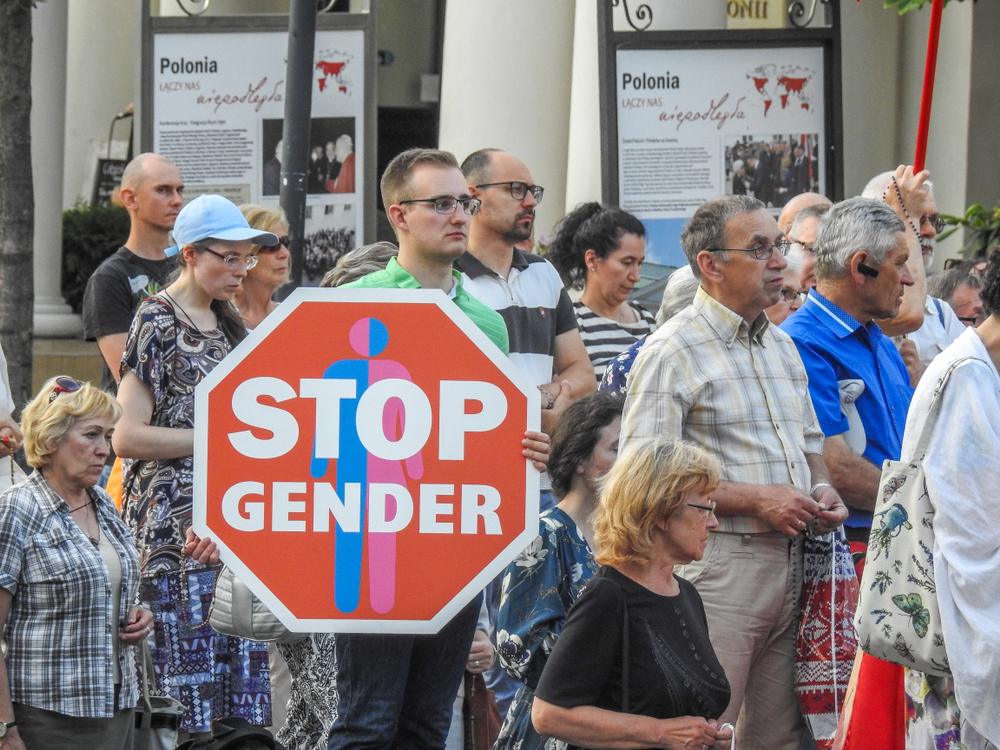By Maria-Nefeli Andredaki,
Judith Butler is undoubtedly one of the most influential gender and queer philosophers of our time. Their book “Gender Trouble: Feminism and the Subversion of Identity”, which came out in 1990, has provided a foundation for queer and feminist studies and has revolutionized the way we view gender. Around a month ago, Judith Butler was invited in Kypseli, Athens, to talk about their latest book “Who’s Afraid of Gender”, which was extremely successful and drew a huge crowd of people.
“Who’s Afraid of Gender” addresses the anti-gender movement, the hatred against LGBTQ+ people and minorities that is used by prominent people, usually politicians and world leaders, to promote their own conservative agenda and maintain power. Butler argues that this hatred, this fear of the concept of gender, is actually centered around a “phantasm”. According to the Cambridge dictionary, a “phantasm” is “something that is seen or imagined but is not real” and, according to the author, this perfectly describes the idea of gender that has been constructed by displaced, weaponized fears.
Fear, in this day and age, is natural. There is every day fear about the economic and political state of the world. There is fear about climate change and destruction. There is fear regarding social issues, violence, injustice and loss of identity. Mental health is at an all-time-low and alienation is the norm. All of this anxiety is weaponized through the Freudian concepts of condensation and displacement; the real fears and worries are accumulated into a singular collective panic, which is then thrust upon gender, creating an imaginary monster (or phantasm) that is seen as the cause of all destruction.

Instead of clearly addressing real-life issues and working towards solving them, gender is portrayed by many conservative religious and political figures as an existential threat to humanity. In the name of protecting humanity from “gender”, these figures attack human rights by restricting minorities’ access to healthcare and protection from violence, while also affecting women’s and AFAB people’s reproductive rights. In the end, freedom and bodily autonomy is eradicated as a means to reaching a “patriarchal dream order”.
The patriarchal dream order is what Butler describes as the ideal patriarchal state of society that conservative leaders seek to “restore” through the anti-gender movement, when in reality, there is no proof that it ever existed in the first place, at least in the exact form they want to establish. The patriarchal dream order is based on the adherence to traditional gender roles and family structures, meaning that women would be limited to the sphere of home-making, while men would be deemed as providers. There would be no bodily autonomy regarding reproductive health, including the abolition of birth control and the impossibility of abortions. Everyone would be confined to a heteronormative reality where their sex assigned at birth directs the course of your whole life and identity.
This is a very concise explanation of the phantasm of gender. If you enjoy academic reading, I would highly suggest you pick this book up and explore the arguments being made. Butler’s work provides a realistic view of the dangerous direction our world is heading in, without diminishing the powerful hope of resistance. And the first step to this resistance is to keep educating ourselves.
References
- Butler, Judith. “Who’s Afraid of Gender”. Farrar. Straus and Giroux. 2024.
- Phantasm. Cambridge Dictionary. Available here




